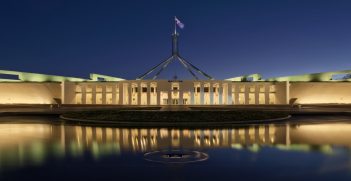16 June 2023: The Week in Australian Foreign Affairs

This week in Australian foreign affairs: Russia’s embassy lease cancelled, Albanese meets with PIF SG, Joint Declaration Against Trade-Related Economic Coercion by 5 Eyes + Japan, and Conroy addresses AIDN on Defence industry in a post-DSR world.
On 15 June, Prime Minister Anthony Albanese and Minister for Foreign Affairs Clare O’Neil held a joint press conference where they announced that the Government planned to introduce legislation “to terminate the Russian Federation’s lease for a proposed diplomatic presence just next to Parliament House.” Albanese referred to the decision as “one taken in the national security interests of Australia” that had the Coalition’s support.
Albanese met with Secretary General of the Pacific Islands Forum Henry Puna on 14 June in Canberra, where the pair discussed “Pacific regionalism and Pacific Leaders’ priorities as set out in the 2050 Strategy for the Blue Pacific Continent, including climate change.” Albanese noted that “Australia deeply values our membership of the Pacific Islands Forum. We are proud to be a founding member of the Forum and contribute to practical outcomes to support the Pacific’s priorities.”
On 8 June, the Governments of Australia, Canada, Japan, New Zealand, the United Kingdom and the United States of America endorsed a Joint Declaration Against Trade-Related Economic Coercion and Non-Market Policies and Practices at a Ministerial meeting in Paris. The Declaration “builds on the momentum of the G7 Leaders’ Statement on Economic Resilience and Economic Security on 20 May 2023.” The Declaration “express[es the nations’] shared concern and affirm[s their] commitment to enhance international cooperation in order to effectively deter and address trade-related economic coercion and non-market policies and practices.” It “urge[s] all governments to refrain from the use of trade-related economic coercion and non-market policies and practices and to support free and fair trade based on open, market-oriented policies and principles that promote a level playing field and non-discriminatory treatment in international trade relations, benefit all economies, and help secure shared prosperity for all.”
Minister for Defence Industry Pat Conroy addressed the Australian Industry and Defence Network (AIDN) on 14 June, on the topic of “Defence industry in a post-[Defence Strategic Review (DSR)] world.” Conroy discussed how the DSR was driven by “speed”, and referred to its “four most critical elements” as being “a shift to a National Defence strategy”, “a focused force”, “the recommendation of greater defence funding”, and “very significant procurement reform”. He then also outlined the six “immediate priorities” – “pursuing AUKUS Pillar 1, the acquisition of nuclear-propelled submarines; secondly, investing in strike and the Guided Weapons Enterprise … ; hardening of the northern bases; a commitment to defence innovation; an investment in the workforce by the ADF workforce and the public service; and a recommitment to regional partnerships in our region.” He referred to “the shift to minimum viable capability” as “one of the most revolutionary aspects of the DSR”, and also reiterated that the decision to produce nuclear-propelled submarines in Australia was “an actual choice.” He concluded by stating that “the Albanese Labor Government will spend more on the Australian defence industry than any other government has in the history of this nation.”
Isabella Keith is a weekly columnist for Australian Outlook. She is also a Research Assistant, Sessional Academic, and Honours student in Law at the Australian National University, with a focus on international law. Isabella attended the AIIA #NextGen study tour to South Korea last year, and was also a delegate to the AIIA’s Australia-Korea-New Zealand and Australia-United States-Japan Policy Forums. She can be found on Twitter here.
This article is published under a Creative Commons License and may be republished with attribution.



